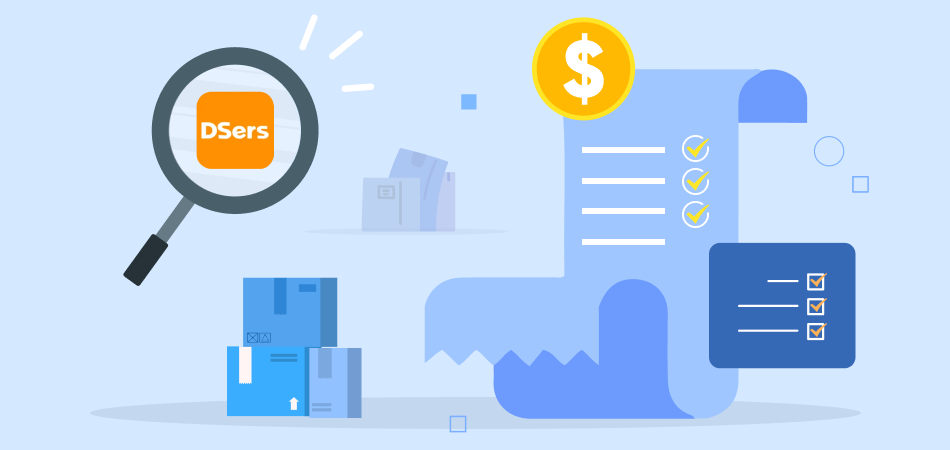What Is Order Management System & How Does It Work: Ultimate Guide

Businesses must efficiently manage their orders, inventory, and fulfillment processes to meet customer demands. An Order Management System (OMS) is a powerful tool that helps businesses streamline order processing, track inventory, and improve customer satisfaction.
This guide will outline what an order management system is, how it operates, and why it is crucial for contemporary businesses.
What Is Order Management System
An Order Management System (OMS) is a software solution that streamlines and automates the order processing workflow, starting from when a customer places an order to its delivery.
It aids businesses in tracking orders, managing inventory, handling returns, and optimizing fulfillment across various sales channels.
An OMS connects with e-commerce platforms, warehouses, and shipping carriers to offer real-time visibility into order status, inventory levels, and customer interactions.
This integration enables businesses to efficiently fulfill orders, minimize delays, and avoid stockouts or overstocking problems.

|
Place Orders to AliExpress In Seconds DSers Bulk Order - Place 100s of orders to AliExpress in a few seconds with a just few clicks |
Key Functions of an OMS:
- Order Processing: Automates the capture, confirmation, and status updates of orders.
- Inventory Management: Monitors stock levels and synchronizes inventory across various channels.
- Fulfillment Coordination: Interfaces with warehouses and shipping carriers to facilitate seamless deliveries.
- Returns & Exchanges: Streamlines the handling of customer returns.
- Multi-Channel Integration: Synchronizes orders from websites, marketplaces (like Amazon and eBay), and physical stores.
An OMS serves as the backbone of an efficient supply chain, ensuring smooth operations and enhancing the customer experience.
How Does Order Management System Work
An OMS works by automating and streamlining the entire order lifecycle, from order placement to delivery. Here’s how the system works.
1. Order Placement
As soon as the order is submitted, the OMS automatically captures all essential details, including the product SKU, quantity, customer information, shipping address, payment confirmation, and any special instructions.
This data is instantly funneled into the centralized OMS dashboard, where it’s organized and queued for the next steps in fulfillment.
2. Order Verification & Payment Processing
Once an order has been placed, the Order Management System moves swiftly into the verification and payment phase, ensuring that the transaction is both legitimate and successfully paid for before moving forward with fulfillment.
3. Inventory Management & Stock Allocation
The OMS verifies product availability and updates inventory levels across all sales channels in real time.
If stock is available, the system allocates the items for fulfillment. If not, it can trigger restocking alerts or suggest back ordering.
4. Order Routing & Fulfillment
The system determines the best fulfillment location (e.g., warehouse, store, or dropshipping supplier) based on factors like proximity to the customer, shipping costs, and inventory levels.
It then generates a picking list for warehouse staff or notifies the supplier.
5. Shipping & Delivery
The OMS connects with shipping carriers such as FedEx, UPS, and DHL to create shipping labels, calculate costs, and monitor shipments.
Customers receive real-time tracking updates, enhancing transparency and minimizing delivery-related inquiries.
6. Returns & Refund Management
If a customer initiates a return, the OMS handles the return request, generates return shipping labels, and updates inventory once the item is received.
It also automates refunds or exchanges, enhancing customer satisfaction.
Benefits of Order Management System
Whether you run an e-commerce store, a retail chain, or a dropshipping business, an OMS provides numerous advantages that help streamline workflows and enhance customer satisfaction.
1. Faster Order Processing
Speed is everything in eCommerce. In a market where customers expect same-day shipping or instant order confirmations, delays can lead to lost trust and poor reviews.
An OMS accelerates the entire order lifecycle by automating critical steps like order capture, supplier communication, inventory validation, and shipping label generation.
2. Real-Time Inventory Tracking
Inventory issues are one of the top causes of returns, refunds, and customer dissatisfaction in dropshipping. With this feature, you can see exactly how much stock is available for every product variation at any time.
If an item is running low or out of stock, the system will instantly update your store to reflect it—removing the item, marking it as unavailable, or alerting you to restock
3. Reduced Errors & Improved Accuracy
Manual order processing is tedious and error-prone, especially as your business scales. Typos in shipping addresses, selecting the wrong product variant, or duplicating orders are all common mistakes that can lead to dissatisfied customers and increased return rates.
An OMS significantly reduces these risks by standardizing and automating workflows from order entry to fulfillment. It validates order information, cross-checks inventory status, and ensures that all data passed to the supplier or warehouse is accurate and complete.
4. Multi-Channel Integration
Many businesses operate across various platforms, including Shopify, Amazon, eBay, and physical stores.

|
Manage Multiple Stores In One Account Multiple Stores Management - Link and manage multiple stores on different platforms in one place |
An OMS centralizes order management across all these channels, enabling businesses to synchronize inventory, pricing, and order fulfillment seamlessly.
5. Cost Savings & Higher Profit Margins
By optimizing inventory management and minimizing shipping errors, an OMS helps businesses save on warehousing, labor, and fulfillment costs. It also prevents losses from stock discrepancies and delayed deliveries.
Why Order Management Is Important for Dropshippers
Dropshipping is a popular business model where sellers don’t keep inventory but instead source products directly from suppliers. Since dropshippers rely on third-party vendors for fulfillment, efficient order management is crucial to ensure smooth operations and customer satisfaction.
1. Automated Order Processing
An OMS eliminates this manual work by automatically routing new orders to the appropriate supplier, with all relevant information (such as product variant, quantity, shipping address, and customer details) already filled in.
2. Multiple Suppliers Management
Most dropshipping businesses collaborate with multiple suppliers to provide a diverse range of products. This strategy allows them to expand their offerings without maintaining physical inventory.

|
Find Better Supplier For Products DSers Supplier Optimizer - One click to filter out the most proper suppliers for your products |
An OMS tracks supplier availability, shipping times, and stock levels, ensuring that the right supplier fulfills each order efficiently.
3. Stockouts & Overselling Prevention
Since dropshippers don’t control their inventory, it’s crucial to have real-time stock updates from suppliers. An OMS synchronizes inventory across multiple suppliers and sales channels, preventing situations where customers order out-of-stock items.
4. Streamlined Shipping & Tracking
Customers expect fast shipping and order tracking. An OMS integrates with multiple shipping carriers, automates tracking updates, and sends shipping confirmations to customers.
This transparency improves trust and reduces customer inquiries about order status.
5. Simplified Returns & Refunds
Handling returns in dropshipping can be complicated since products are shipped directly from suppliers.
An OMS helps by automating return requests, coordinating with suppliers, and issuing refunds or exchanges efficiently.
How DSers Helps Manage Dropshipping Orders
DSers is a popular and powerful order management system tailored for dropshipping businesses. It simplifies order processing, enhances automation, and integrates with suppliers to ensure smooth fulfillment.
1. Supplier Optimizer
One of the core challenges in dropshipping is choosing the right supplier—one who can fulfill orders quickly, accurately, and reliably.
DSers addresses this with its Supplier Optimizer feature, which helps you compare multiple suppliers for the same product based on price, shipping time, ratings, and customer feedback.
It reduces the risk of manual errors, fulfillment delays, and order mix-ups, allowing you to focus more on scaling your business.
2. Bulk Order
For dropshipping businesses handling dozens—or even hundreds—of orders daily, manually placing each one with a supplier can quickly become overwhelming.
DSers eliminates this pain point with its Bulk Order feature, allowing you to save a lot of time for dropshipping businesses that deal with large order volumes.
Dropshippers can place multiple orders to their suppliers at once, streamlining the entire process and allowing them to focus on growing their business.
3. Inventory Synchronization
Nothing frustrates a customer more than ordering a product, only to find out later that it's out of stock.
DSers helps avoid this issue with its Inventory Synchronization feature, which integrates directly with your supplier’s stock management system.
This allows for real-time updates on product availability so your store reflects what’s truly in stock at all times.
When a supplier runs out of an item, DSers can either automatically mark it as out of stock on your Shopify or WooCommerce store or send you an alert so you can take action.
4. Multiple Store Management
Managing more than one dropshipping store can be a logistical nightmare—especially when each has its own product catalog, order flow, and customer base.
DSers simplifies this with its Multiple Store Management system, which lets you control all your connected e-commerce stores from a single centralized dashboard.
This centralizes your operations and simplifies order management across various channels, enhancing efficiency and reducing the complexity of handling multiple platforms.
5. Automated Tracking Updates
Once a product is shipped, your customer’s journey doesn’t end—it continues through delivery.
DSers enhances that experience with automated tracking updates, which sync shipping details and tracking numbers from the supplier directly into your Shopify or WooCommerce order system.

|
Tracking Number with Auto Sync Auto Sync Tracking Numbers - Automatically sync the tracking number from AliExpress to your store |
This automation keeps your customers informed without requiring manual input from you. As soon as a package ships, your store is updated and a tracking email can be sent to the buyer, allowing them to follow their order’s journey in real time.
Final Thoughts
An Order Management System (OMS) is indispensable for businesses looking to streamline their order processing, reduce manual errors, and improve the overall customer experience.
For dropshipping businesses, where efficiency and accuracy are essential, tools like DSers provide powerful automation features, real-time synchronization with suppliers, and seamless integration with e-commerce platforms, simplifying order management.











 Company
Company
 Why Choose DSers
Why Choose DSers
 Blog
Blog
 Help Center
Help Center




 Live Chat
Live Chat